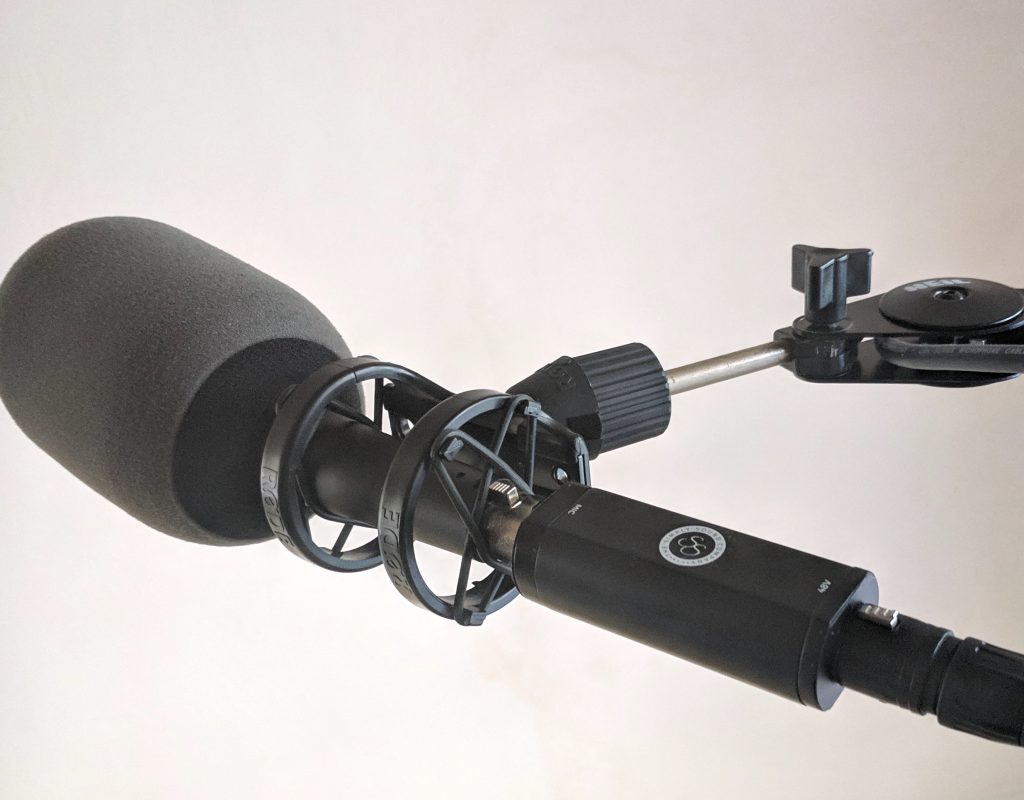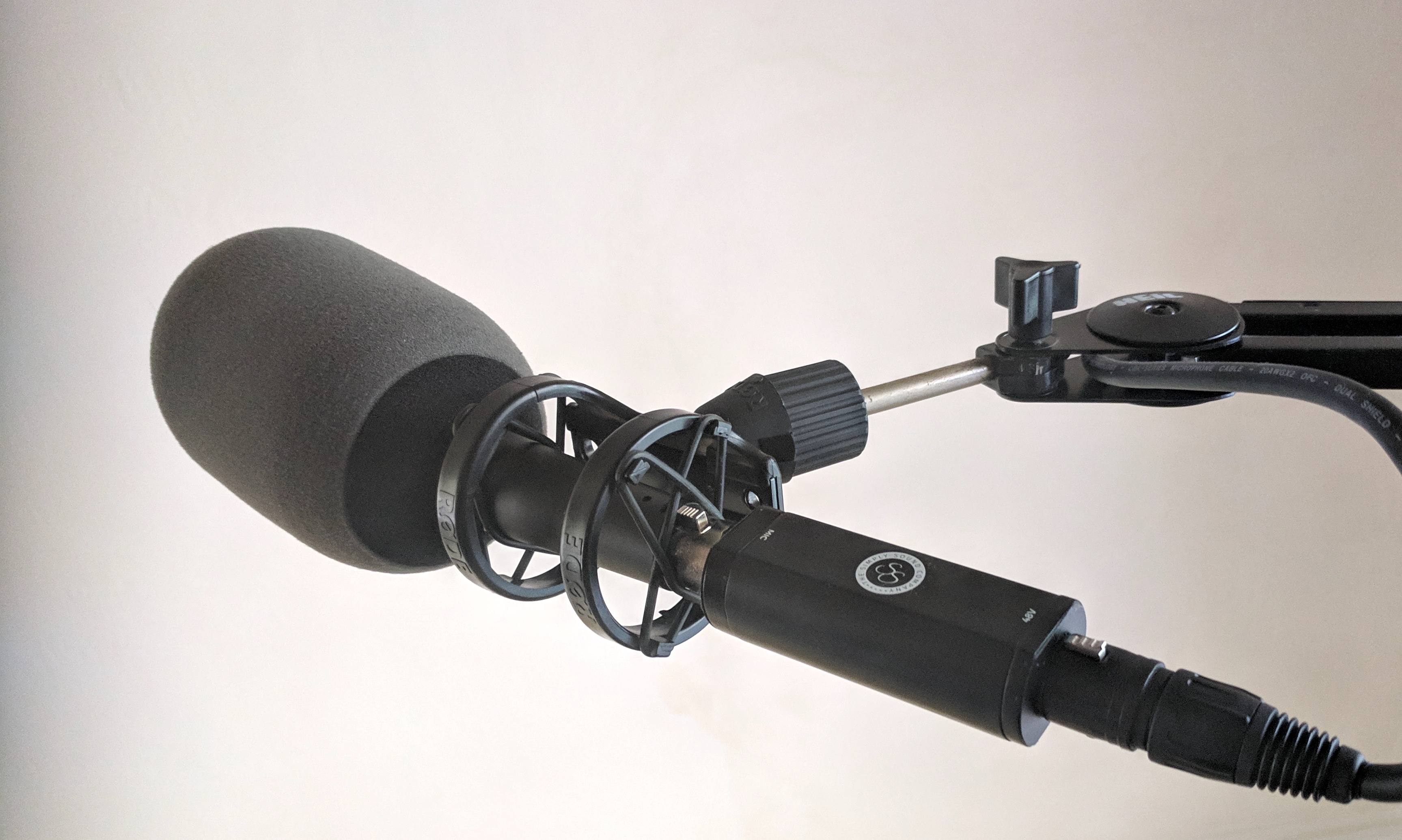
This is a review of the SS-1 pre-preamp from The Simply Sound Company from Salt Lake City (Utah, United States), which graciously sent me a unit to review. Like elevator shoes, high heels or a step stool, PRE-PREAMPS like the SS-1 help dynamic microphones perform better, especially when used with weaker, imperfect preamps. Some other people call this type of device an ACTIVATOR or BOOSTER, but I like calling it a PRE-PREAMP. The market demand for them must be growing, since there are more manufacturers offering them now. Although I have mentioned them before, this is the first formal review I am doing of a PRE-PREAMP. This article also includes GAIN MATH using a dynamic microphone, the Zoom H5 recorder and the RØDECaster Pro —with and without an SS-1, and a formula so you can do the same calculation with any set of equipment, including examples with the RØDECaster Pro, even though it may not be necessary to use a PRE-PREAMP in that case. I’ll also be clarifying the SS-1’s recent form-factor improvement, which now makes it usable with a single XLR cable, coupled directly to the microphone.
When is it appropriate to use a pre-preamp like the SS-1?
It’s most appropriate to use a pre-preamp like the SS-1 when you use a dynamic microphone which isn’t doing its best with your current preamp in your current device, and purchasing the pre-preamp doesn’t cost close to the price of upgrading your current device to one with a much better preamp. On the other hand, if you don’t yet own the device, the same rules apply by adding the price of the two devices.
Other factors include:
- How many microphones need to be boosted. For example, if you need to boost 4 dynamic mics, you must multiply the cost of the pre-preamp by 4 when comparing the price of a 4-input mic mixer or interface with stronger preamps. However, if there are fewer dynamic mics to be boosted, the investment will likely favor the pre-preamp, especially one so affordable as the SS-1 (Amazon — directly from The Simply Sound Company).
- The device where you may want to connect it may be unique and irreplaceable. Here are 2 examples of that scenario:

- When Curtis Judd reviewed the Panasonic DMW-XLR1 XLR (shown above and below, Amazon — B&H) interface for the Panasonic Lumix GH5 (see article with his video review here), Curtiss discovered that the preamp in the DMW-XLR1 was weak for dynamic mics. There is really no alternative to the DMW-XLR1 if you want to record 24-bit audio within the GH5 or GH5s, so this is an application where a pre-preamp like the SS-1 would really be the only solution to use a dynamic microphone optimally. The same situation probably applies to other professional cameras with XLR inputs: If you are completely happy with the visual quality, rather than replacing an entire camera which likely cost thousands of dollars or euros, you can simply purchase a pre-preamp like the SS-1.

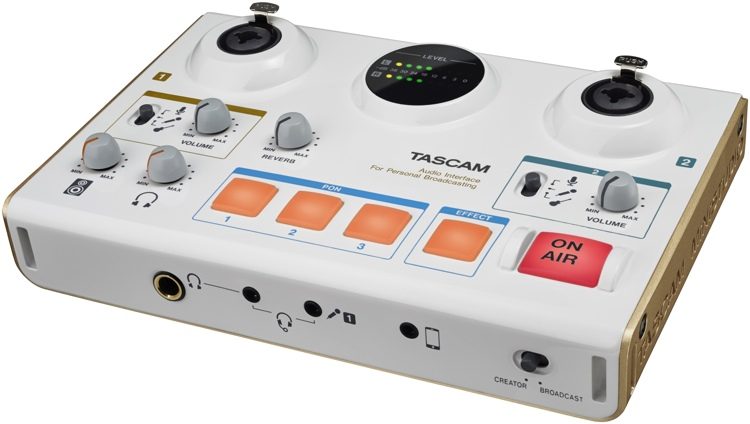
- An audio mixer may have unique, built-in features that are unavailable in any other device even at double or triple the price. For example the Tascam MiNiSTUDIO CREATOR US-42 with 2 XLR mic inputs (shown above, Amazon — B&H) has built-in effects, virtual carts and compression, as does the recently released —much higher end— US$599 RØDECaster Pro with 4 XLR mic inputs (shown below, covered in several articles, with virtual carts, 4 channels of APHEX processing, built-in standalone recording and foolproof instant mix-minus, B&H link).
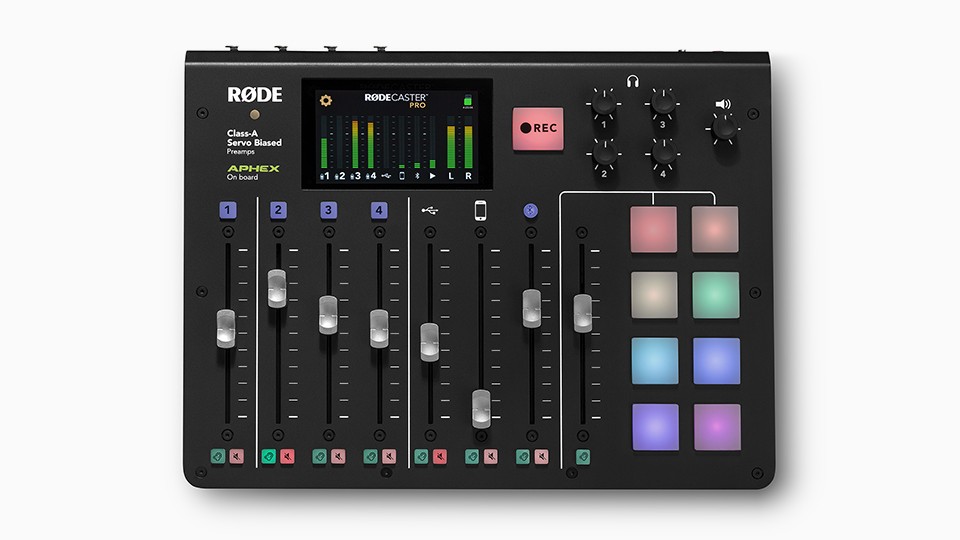
How to do gain math with (or without) a pre-preamp
Calculating the gain math with a pre-amp requires four different values:
- The native sensitivity spec of the dynamic microphone.
- The fixed clean gain of the pre-preamp.
- The maximum gain of the preamp in your target device, be it a professional camera, interface or mixer.
- The desired digital recording level.
First I’ll explain each one, and then show you the formula.
The native sensitivity spec of the dynamic microphone
Many dynamic microphones have a published sensitivity spec in dB. Others publish it in mV/Pa, and must be pre-calculated. Here is a list of examples I prepared, alphabetically by brand.
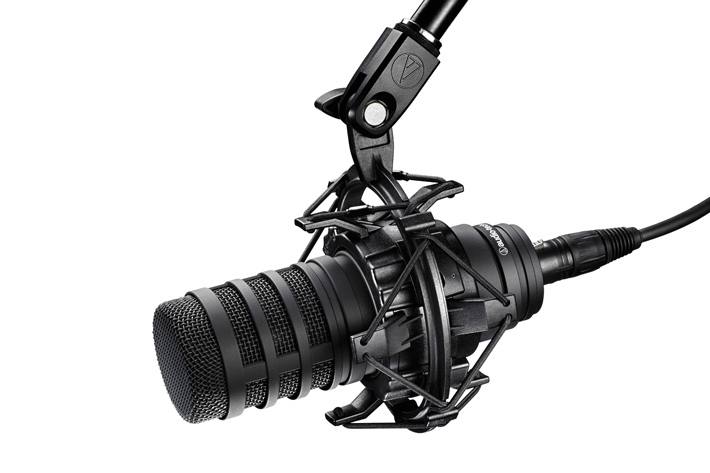
- Audio Technica BP40 (shown above, reviewed here) -48 dB (This is the “loudest” of this list, meaning it has the highest output level, so it needs the least amount of gain.)
- Electro-Voice RE20 -56 dB (calculated and rounded from the published spec of 1.5 mV/Pa)
- Heil PR40 -53.9 dB
- Pyle PDMIC78 (reviewed here) -54 dB (the one used for the test recordings in this review)
- RØDE PodMic -57 dB (shown below, just being released in January 2019)
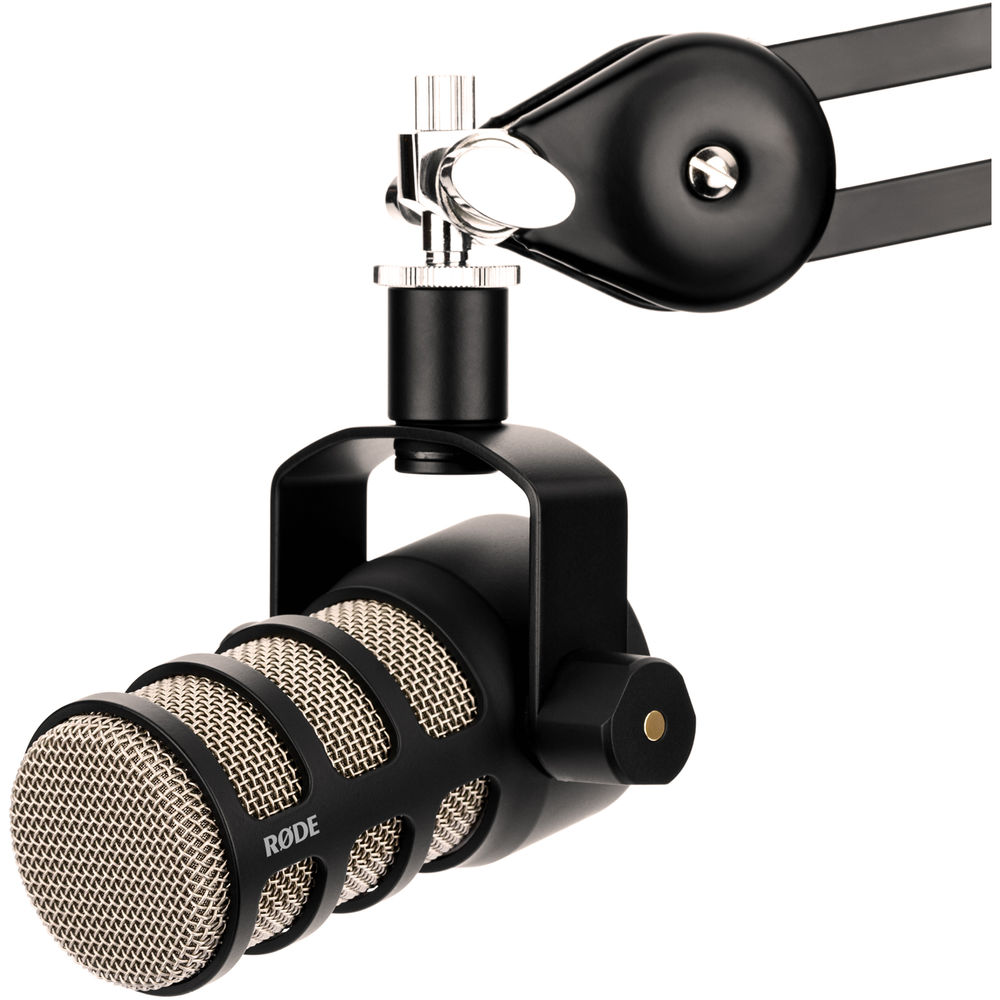
- Senal ENG-18RL (reviewed here, ) -53 db (calculated and rounded from the published spec of 2.2 mV/Pa.)
- Shure SM7B -59 db (shown below, the “quietest” microphone in this list, so it needs the most amount of gain.)
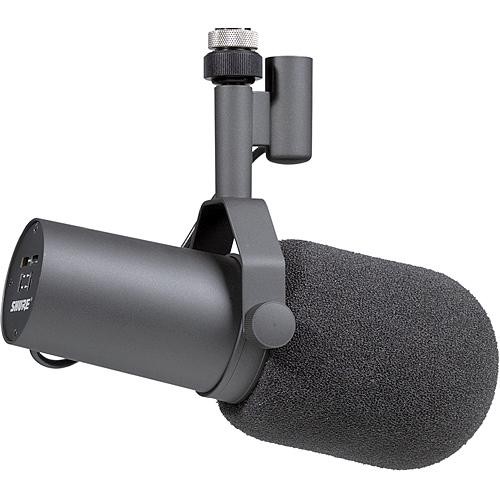
The legendary SM7B (shown above) is the favorite microphone of industry leaders and content producers like Bandrew of Podcastage, Jimmy Dore and Rob Greenlee. The SM7B was used by Michael Jackson to record Thriller. However, it’s the “quietest” microphone in this list, so it needs the most amount of gain.
The fixed pre-gain of the pre-preamp
- Cloudlifter CL-1 +25 dB
- Fethead +27 dB
- SS-1 (covered in this article) +27 dB
The maximum gain of the preamp in your target device
Your target device can be a professional camera, interface or mixer. I must clarify that two different categories of pre-preamps can be used with devices that use an unbalanced microphone input (i.e. the iRig Pre, which requires a battery inside and terminates in an unbalanced TRRS plug) or balanced inputs, like the Cloudlifter, Fethead and SS-1 (which are all powered by 48-volt phantom power and therefore can only be used with balanced inputs).
Here are some examples of the published maximum gain of several target devices which all have balanced XLR input and offer optional phantom power, in alphabetical order:
- Audio Tecnica AT-MX351a automatic mixer (reviewed here) +73 dB
- iRig Pre HD (reviewed here) +60 dB (This maximum gain value is not published by iRig, but was independently estimated by both me and by Bandrew of Podcastage to be about +60 dB in completely different geographical locations.)
- RØDECaster Pro mixer/recorder/production center (several articles) +50 dB
- Sound Devices MixPre-3 recorder/mixer/interface (reviewed here) + 76 dB (the strongest preamp listed in this article)
- Tascam US-2×2 interface (reviewed here) +57 dB
- Zoom H4n Pro recorder/interface +43 dB (the weakest preamp listed in this article)
- Zoom H5 recorder/interface (reviewed here as part of a system) +52 dB
- Zoom H6 recorder/interface +55.5 dB
The desired digital recording level
When I make a raw digital recording at 24 bit (see Understanding 24-bit vs 16-bit audio production & distribution), I generally set my record level to have peaks around -12 dB to have a safety ceiling in case anything gets unexpectedly loud, to prevent clipping (which is fatal in digital unless you have iZotope RX). The 24-bit raw recording gives us 16,777,216 discreet values for loudness levels (as opposed to only 65,536 discrete values with 16-bit raw recording), which means that even after normalization to our desired distribution audio level, there are fewer or no noticeable artifacts by having the original 24-bit recording. Some colleagues are less conservative than I am and record hotter, while others like to record even more conservatively at -18 dB or even lower.
Now, here comes the formula and an example calculation:
- Take the microphone’s native sensitivity (a negative number in dB, or —in some cases— a calculated number in dB calculated from the published mV/Pa value)
- Add the fixed pre-gain amount of the pre-preamplifier to get the net boosted sensitivity
- Compare that sum with the device’s maximum gain, taking into account the desired recording level
Example with the Pyle PDMIC78, the SS-1 and the Zoom H5 recorder
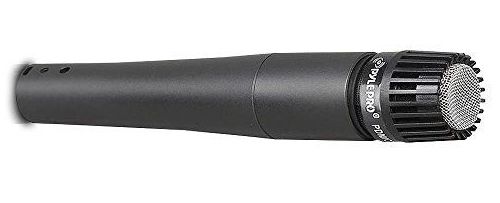
- PDMIC78 -54 dB + 27dB from the SS-1 = a net sensitivity of -27 dB
- If we wanted to record at zero dB (which we don’t!), the H5’s +52 db maximum gain would give us 25 dB of headroom, but since we want to record at -12 dB, we actually have 37 dB of headroom, so we can have the potentiometer set much lower. In fact, we’ll see that in practice ahead in this article.
Without the SS-1, we would only have 10 dB of headroom to record at -12 dB. This is important with the H5 recorder, since it is known for not being so clean near its maximum gain.
Example with the Shure SM7B, the SS-1 and the Zoom H5 recorder
- SM7B -59 dB + 27dB from the SS-1 = a net sensitivity of -32 dB
- If we wanted to record at zero dB (which we don’t!), the H5’s +52 db maximum gain would give us 20 dB of headroom, but since we want to record at -12 dB, we actually have 32 dB of headroom, so we can have the potentiometer set much lower.
Without the SS-1, we would only have 5 dB of headroom to record at -12 dB. This is important with the H5 recorder, since it is known for not being so clean near its maximum gain.
Example with the Pyle PDMIC78, the SS-1 and the RØDECaster Pro
- PDMIC78 -54 dB + 27dB from the SS-1 = a net sensitivity of -27 dB
- If we wanted to record at zero dB (which we don’t!), the RØDECaster Pro’s +50 db maximum gain would give us 23 dB of headroom, but since we want to record at -12 dB, we actually have 35 dB of headroom, so we can have the virtual potentiometer in the menu set much lower (see illustration in the next subsection).
Without the SS-1, we would only have 8 dB of headroom to record at -12 dB. Although I haven’t yet tested the RØDECaster Pro personally (it should be arriving soon), if its preamps are anything like the RØDE AI–1 interface in terms of cleanliness (it was released in January 2018), then it is likely to be equally as clean as a whistle even at the maximum gain setting, and the maximum on the AI-1 is only +45 dB, compared to +50 dB with the RØDECaster Pro.
Example with the Shure SM7B, the SS-1 and the RØDECaster Pro
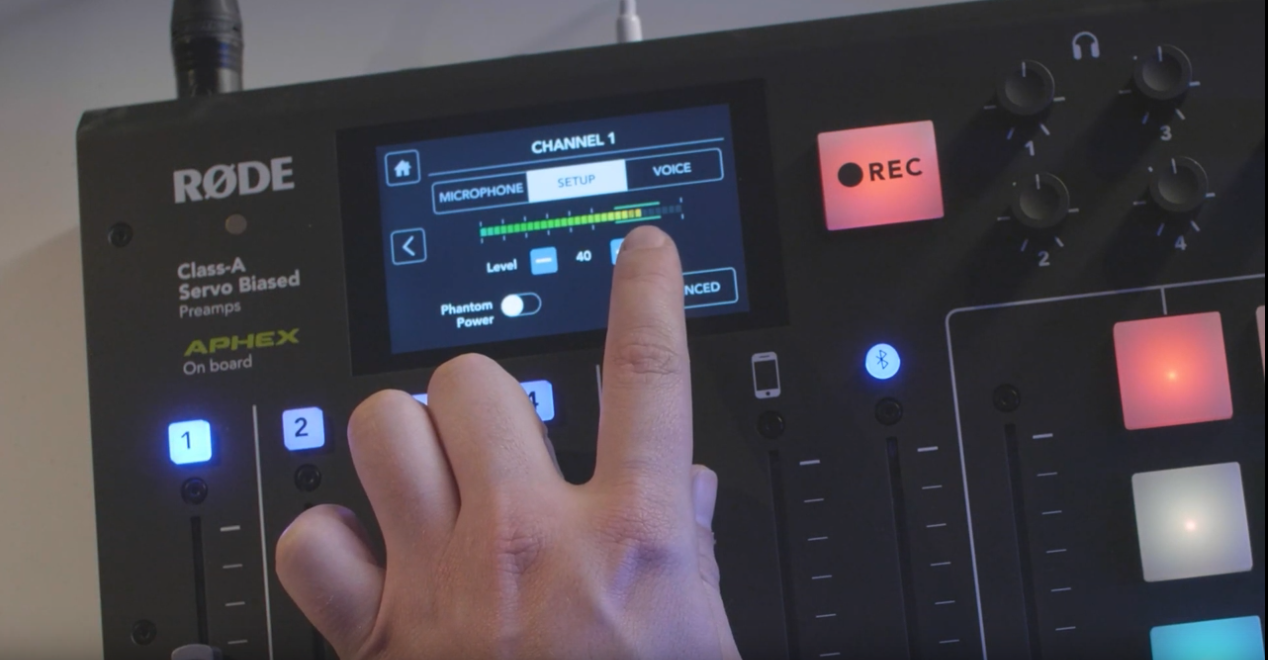
In the above screenshot from a RØDE instructional video, Ryan is adjusting the level of the new PodMic (which is rated at -57 dB sensitivity) on the RØDECaster Pro. RØDE has not indicated whether Ryan was using any pre-preamplifier, but I sincerely doubt it, since RØDE manufacturers both the microphone and the RØDECaster Pro. I suspect that the indicated “sweet spot” on screen is probably a range of -12 to -18 dB.
- SM7B -59 dB + 27dB from the SS-1 = a net sensitivity of -32 dB
- If we wanted to record at zero dB (which we don’t!), the RØDECaster Pro’s +50 db maximum gain would give us 18 dB of headroom, but since we want to record at -12 dB, we actually have 30 dB of headroom, so we can have the virtual potentiometer in the menu set that much lower.
Without the SS-1, we would only have 3 dB of headroom to record at -12 dB. Although I haven’t yet tested the RØDECaster Pro personally (it should be arriving soon), if its preamps are anything like the RØDE AI–1 interface in terms of cleanliness (it was released in January 2018), then it is likely to be equally as clean as a whistle even at the maximum gain setting, and the maximum on the AI-1 is only +45 dB, compared to +50 dB with the RØDECaster Pro.
New form factor in SS-1 allows direct coupling and use of a single XLR cable
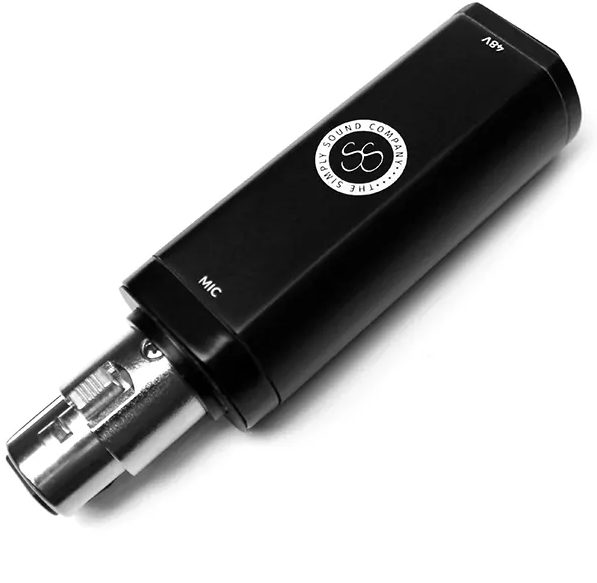
Unlike its prior version, the new version of the SS-1 now allows direct coupling to a microphone, so a single XLR cable is required, rather than two.
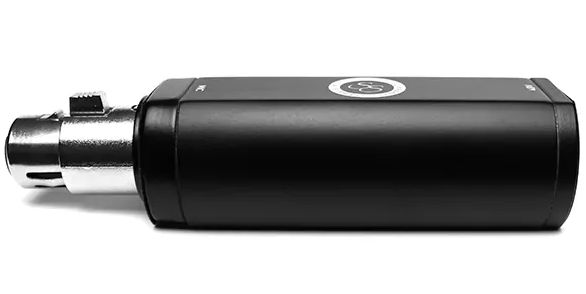
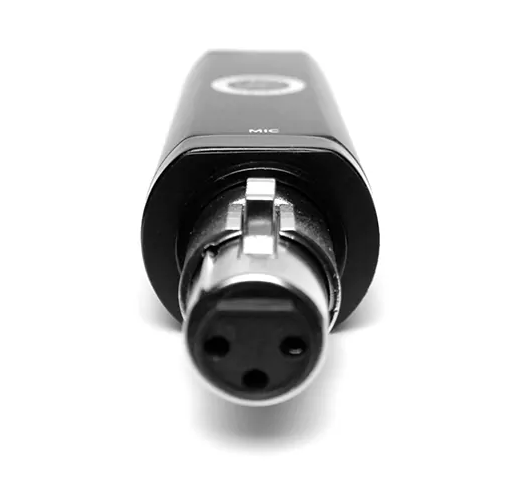
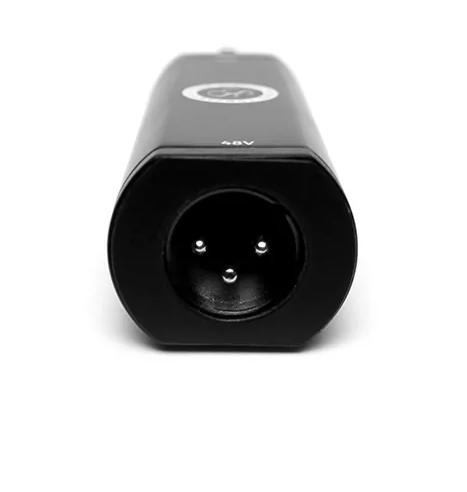
To my knowledge, this form factor was only available previously with the Fethead, which is made in Holland.
Official comparison chart from The Simple Sound Company

The pricing listed above is in US$ (US dollars). In Europe, the Fethead costs €69 (euros) which —at today’s conversion rate is about US$78.63, but (for US readers) that is before shipping from Holland, importation and reseller margin. After being imported to the US, the current price is about US$90 when sold by a US dealer like B&H.
Two test recordings and how they were made
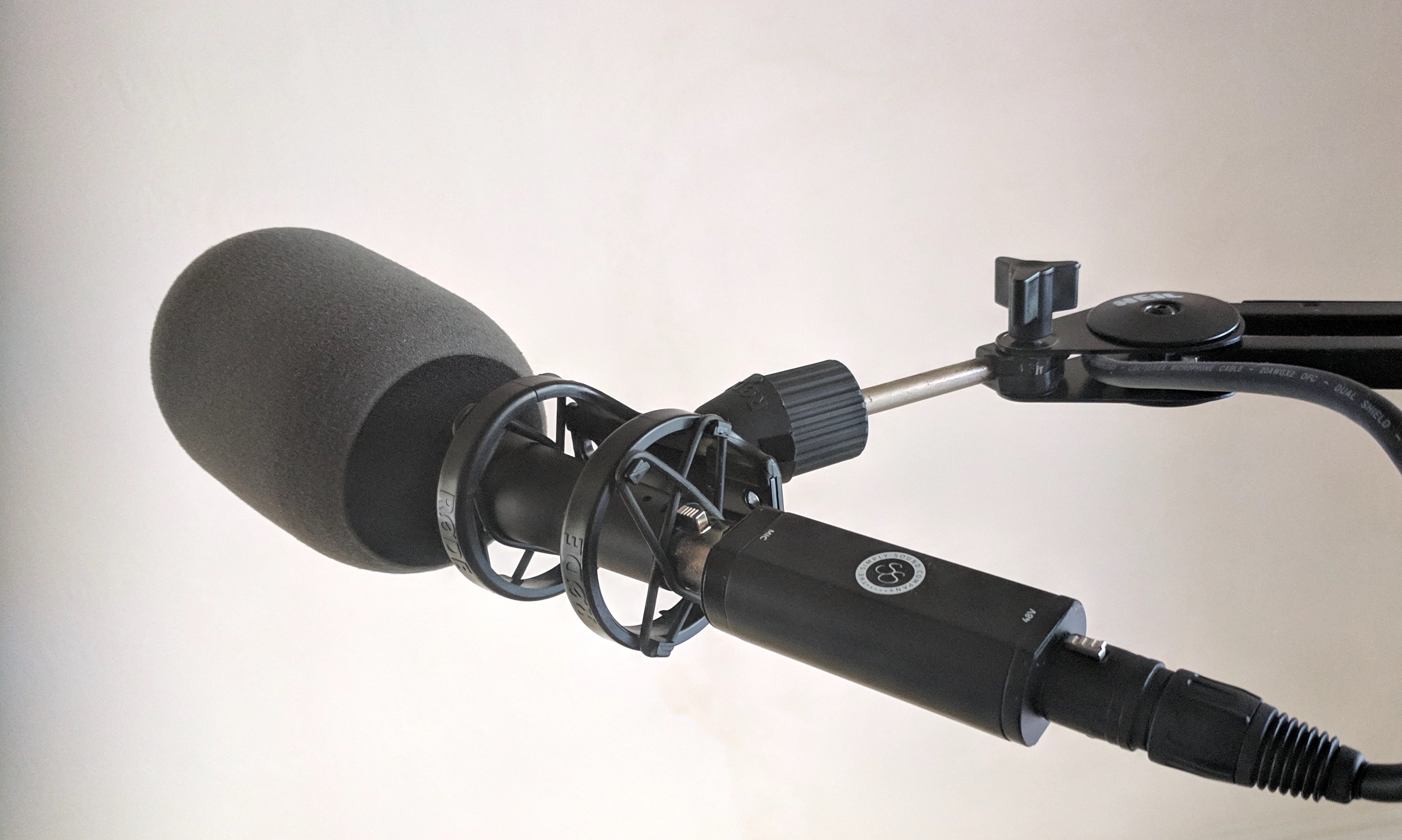
I made the recordings for this review using the Pyle PDMIC78 (illustrated above, reviewed here, Amazon — B&H) dynamic microphone and the enormous presidential Shure A81WS windscreen (Amazon • B&H).
Direct connection of mic to recorder. This is an uncompressed WAV file at 48 kHz, normalized. Please use your best headphones and WiFi, unless you have unmetered mobile data.
For the first recording (above), the Pyle PDMIC78 was connected directly to XLR input 1 of my Zoom H5 recorder, and I made the original recordings as mono WAV recording at 48 kHz/24-bit. Phantom power on the H5 was off.
Mic connected via the SS-1 pre-preamp to the recorder. This is an uncompressed WAV file at 48 kHz, normalized. Please use your best headphones and WiFi, unless you have unmetered mobile data.
For the second recording (above), the Pyle PDMIC78 was connected to XLR input 1 of my Zoom H5 recorder via the SS-1 from The Simple Sound Company. Phantom power on the H5 was on to power the SS-1. (The SS-1 does not send any phantom power to the microphone.)
Both recordings were trimmed and normalized with Hindenburg Journalist Pro, my favorite multitrack software for Mac for audio storytellers (also available for Windows). After that, I exported them as mono 48 kHz 16 bit WAV. See my related Hindenburg Journalist Pro articles… All audio production & distribution should go 48 kHz and also Understanding 24-bit vs 16-bit audio production & distribution. Use this link for a free trial followed by a big discount on Hindenburg Journalist Pro.
Conclusions
Please note that the weaker (or the noisier near the maximum gain) the preamp on the target device, the more you will notice the improvement of the use of a pre-preamp, and also, the gain-hungrier the dynamic microphone. To give you some examples, you would notice it much more with a Shure SM7B microphone, together with original Zoom H4 recorder than with the H5, less with an H6, and probably not at all with the MixPre 3 from Sound Devices (reviewed here).
The better the preamp in your target device and/or the higher output the dynamic microphone, the less you’ll need a pre-preamp. The volume of the voice being spoken is also a factor: It takes a lot more gain to capture a whisper and/or someone far from the microphone. There, the acoustic signal-to-noise ratio becomes even more important than the electrical system signal-to-noise ratio. This article is mostly about the electrical system signal-to-noise ratio, not the acoustic signal-to-noise ratio, but both are important.
I am very glad to see a US manufacturer offering a pre-preamp with the sleekness and good build quality of the SS-1 (Amazon — directly from The Simply Sound Company). I like that the SS-1 can be mounted directly onto a microphone, without requiring any extra cable. The only minor cosmetic change I would like to see is to make it all black, including the female XLR connector. That way, the connector wouldn’t be so noticeable when coupling it to a black microphone, and it would look more like a single device. No harm would take place if an all-black SS-1 were connected to a non-black microphone.
(Re-)Subscribe for upcoming articles, reviews, radio shows, books and seminars/webinars
Stand by for upcoming articles, reviews, and books. Sign up to my free mailing list by clicking here. If you previously subscribed to my bulletins and no longer receive them, you must re-subscribe due to new compliance to GDPR. Most of my current books are at books.AllanTepper.com, and my personal website is AllanTepper.com. Also visit radio.AllanTepper.com.
Si deseas suscribirte (o volver a suscribirte) a mi lista en castellano, visita aquí. Si prefieres, puedes suscribirte a ambas listas (castellano e inglés).
Suscribe to his BeyondPodcasting show at BeyondPodasting.com.
Subscribe to his Tu radio global show at Turadioglobal.com.
Subscribe to his Tu salud secreta show at TuSaludSecreta.com.
Subscribe to his award-winning CapicúaFM show at CapicúaFM.com.
Save US$20 on Google Fi, my favorite mobile telephony and data service
Click here to save US$20 on Google Fi, which now works on iPhone and Android. With Google Fi (covered previously in several articles), there is no extra charge for data-only SIM cards on the same account, for up to 10 devices. You only pay for the total data, and data is free after 6 GB per month. So you could be using one Google FI SIM card on your primary phone, another in a tablet or secondary phone (or third, of fourth…).
FTC disclosure
No manufacturer is specifically paying Allan Tépper or TecnoTur LLC to write this article or the mentioned books. Some of the other manufacturers listed above have contracted Tépper and/or TecnoTur LLC to carry out consulting and/or translations/localizations/transcreations. Many of the manufacturers listed above have sent Allan Tépper review units, including Audio Technica, IK Multimedia, RØDE, Sound Devices, Tascam and The Simply Sound Company. So far, none of the manufacturers listed above is/are sponsors of the TecnoTur , BeyondPodcasting or TuRadioGlobal programs, although they are welcome to do so, and some are, may be (or may have been) sponsors of ProVideo Coalition magazine. Some links to third parties listed in this article and/or on this web page may indirectly benefit TecnoTur LLC via affiliate programs. Allan Tépper’s opinions are his own.
Copyright and use of this article
The articles contained in the TecnoTur channel in ProVideo Coalition magazine are copyright Allan Tépper/TecnoTur LLC, except where otherwise attributed. Unauthorized use is prohibited without prior approval, except for short quotes which link back to this page, which are encouraged!

Filmtools
Filmmakers go-to destination for pre-production, production & post production equipment!
Shop Now